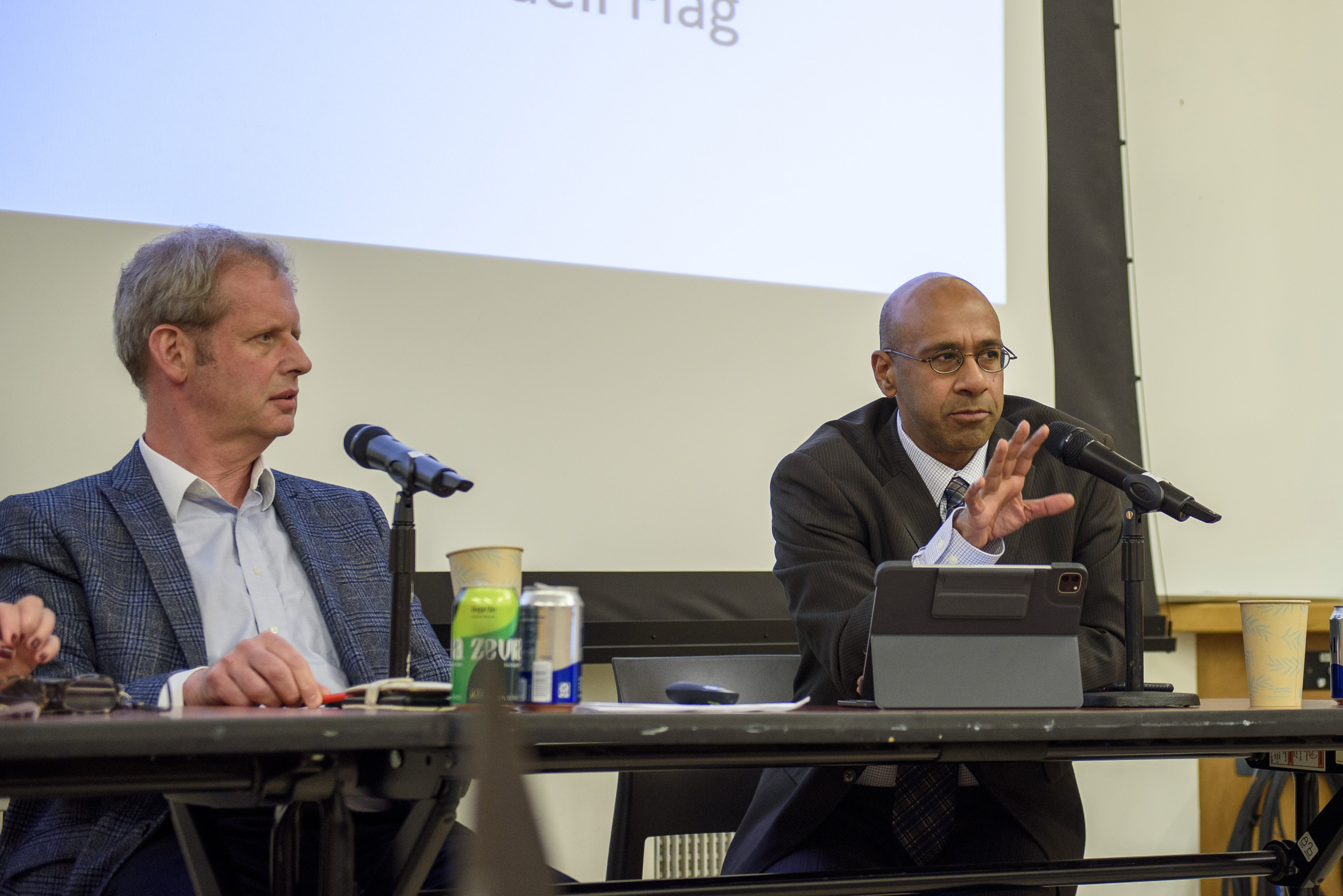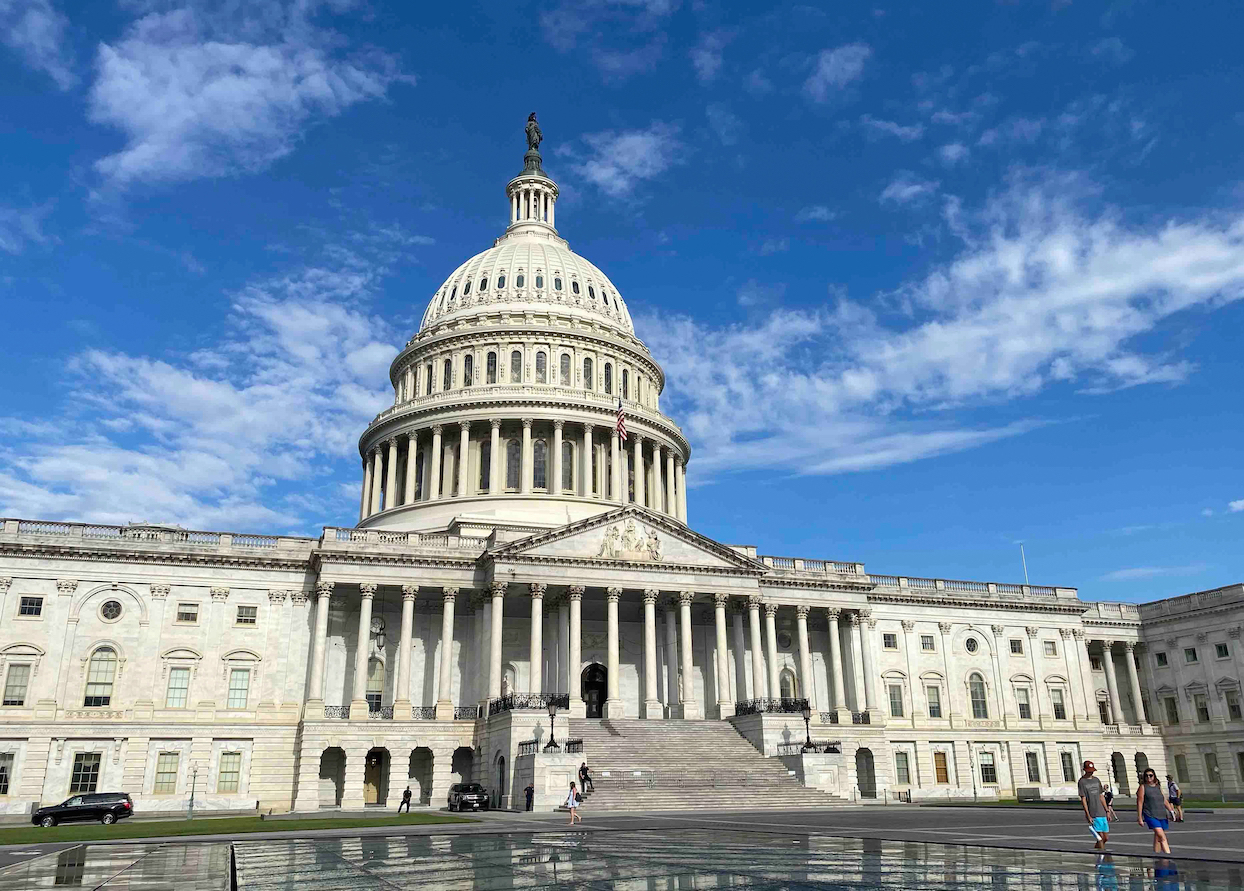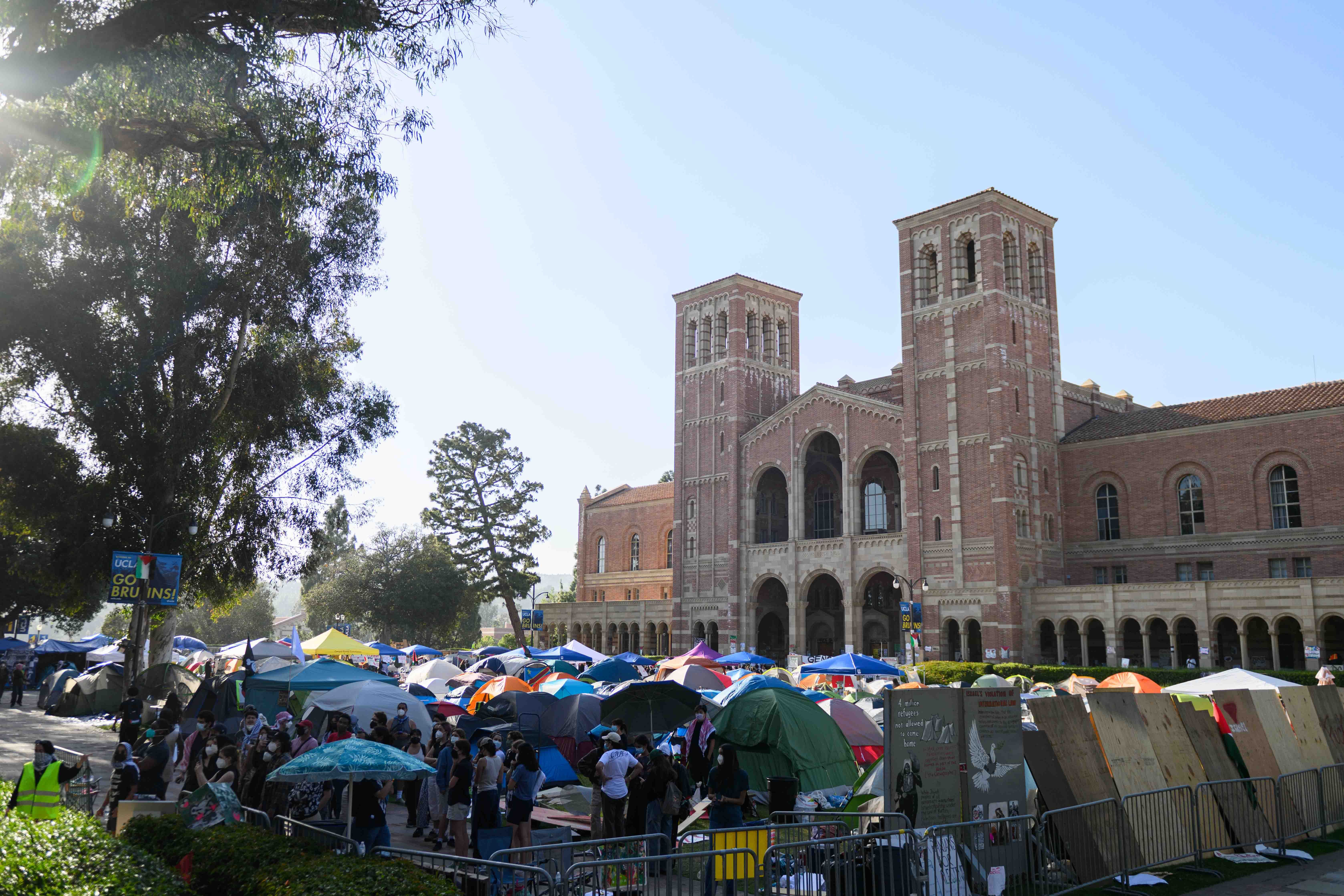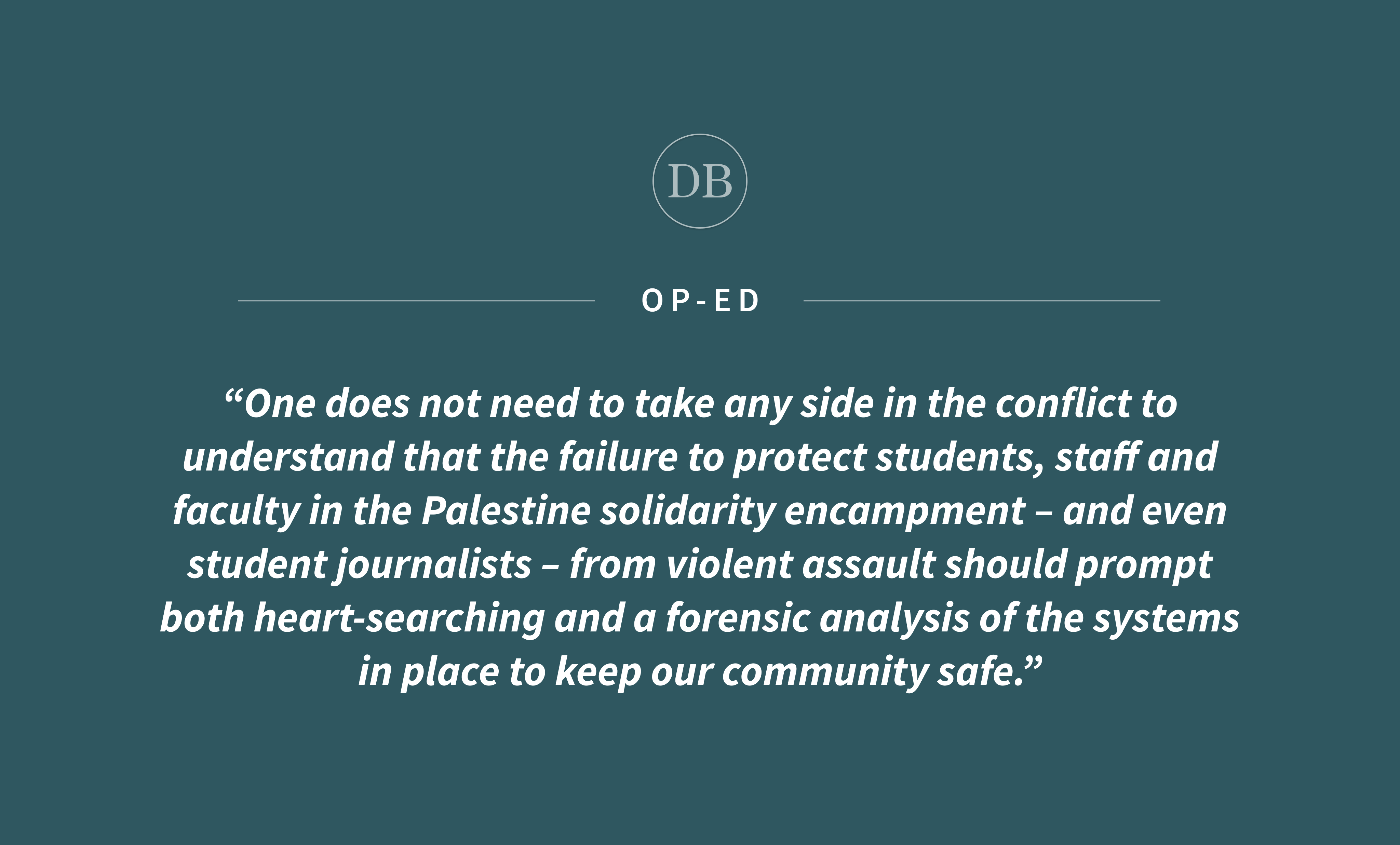Behind the campus encampments: what kind of student activism is protected by law?
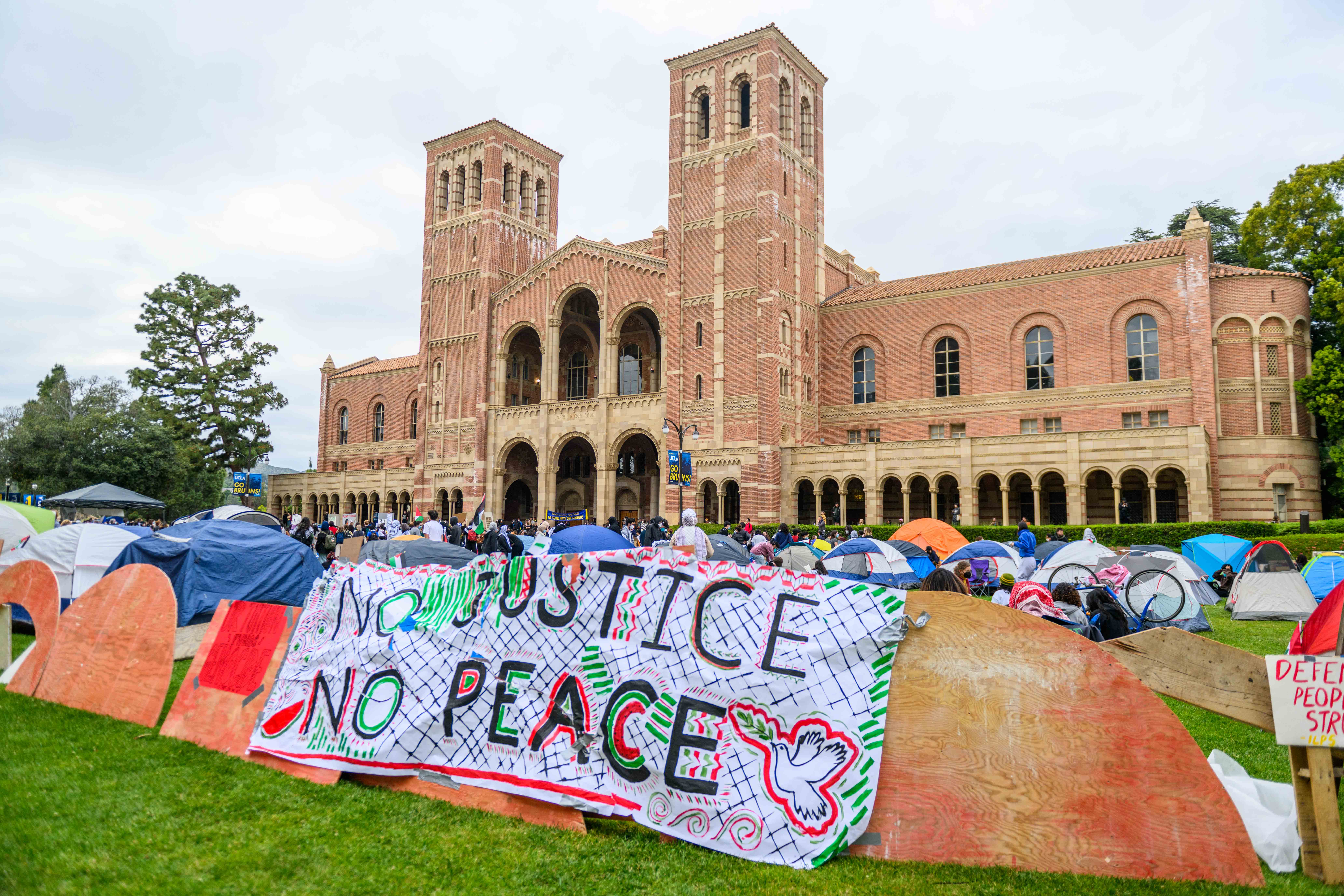
The Palestine solidarity encampment outside Royce Hall is pictured. (Julia Zhou/Photo editor)
By Maia Hull
May 28, 2024 2:13 p.m.
This post was updated June 5 at 7:51 p.m.
Recent demonstrations at UCLA have raised questions regarding First Amendment rights and protections afforded to those participating in protests, encampments and other forms of activism on the public school’s campus.
Protests in support of Palestine on college campuses across the country have experienced pushback and forced dispersals from their university’s administration as well as law enforcement. At UCLA, the Palestine solidarity encampment outside Royce Hall was forcibly removed from campus May 2, resulting in over 200 student arrests. Additionally, on May 23, a second encampment was set up on Kerckhoff patio, and it received orders to disperse.
Colleges and universities have historically been centers for protests and activism surrounding local or global events. However, the rights afforded by the First Amendment to those involved are not always clear.
Written in the United States Constitution, the First Amendment states that Congress cannot pass a law that infringes on freedom of speech or the right to peacefully assemble. This amendment has historically been widely interpreted to protect individuals from governmental suppression of ideas, according to the American Library Association.
As the UCLA protests began impacting campus operations, the First Amendment rights of the protesters faced increased debate.
Law professor Neil Netanel said the intent of the First Amendment is to prevent the government from suppressing free speech.
“However, that does not mean that any student is free under the First Amendment to speak whatever they want to, wherever they want to on campus, whenever they want to on campus because the government is entitled to enact what are called time, place and manner restrictions on speech,” Netanel added.
According to the Legal Information Institute at the Cornell Law School, time, place and manner restrictions are regulations on speech that can be enforced by the government.
For example, in the Supreme Court case Hill v. Colorado, a time, place and manner restriction was placed that made it unlawful for individuals within 100 feet of the entrance of a health care facility to knowingly approach within 8 feet of another person to hand out leaflets or engage in oral protest. The court decided this was a lawful restriction in order to protect the health and safety of citizens, according to the Legal Information Institute at the Cornell Law School.
These rules are allowed to be enforced when they leave ample alternative channels for information to be shared and when the restrictions for said information can be justified without any reference to the content of the regulated speech, according to the Legal Information Institute.
In the case of UCLA specifically, Netanel said the administration would be allowed to enforce time, place and manner restrictions in order to avoid disturbances to the education of students.
For example, the administration could restrict demonstrations to just Bruin Plaza in order to avoid disturbing classes, Netanel added.
The specific time, place and manner restrictions enforced by UCLA are set up to avoid interference of campus operations, according to UCLA Student Organizations, Leadership and Engagement. They allow individuals to exercise their rights of speech and assembly, but these activities must be done in a way that does not interfere with the orderly operation of campus and reasonably protects other individuals from becoming involuntary audiences.
Retired law professor Eugene Volokh said restrictions on free speech must be content neutral, meaning that the government cannot permit some speakers who have certain views to do things that other speakers are not allowed to.
“If UCLA wants to enforce a rule that says you can’t sleep overnight in open spaces, and you can’t rope off or block off parts of campus in a way that interferes with other students’ equal rights to use those parts of campus, … if they’re enforced in a content-neutral way, those would be content-neutral restrictions that the government would have every right to enforce,” Volokh said.
Ahilan Arulanantham, a professor from practice at the UCLA School of Law, said along with restrictions to the degree to which speech and assembly are protected, there are also many misconceptions about what kinds of speech are protected.
“One common one is the notion that racist speech can be suppressed. There’s no racism exception to the First Amendment,” Arulanantham said. “The charge that particular kinds of speech are antisemitic, for example, that’s a very important claim and might be a reason why, if true, the speaker shouldn’t say those things. But it is not a reason for why the university can suppress that speech by itself.”
Although racist speech and hate speech are protected, some rhetoric remains prohibited. This includes but is not limited to child pornography, false advertising and true threats, according to the American Library Association.
Volokh said another misconception is when people assume they are entitled to any kind of demonstration if they are doing it to advocate for a political or social cause.
“You don’t have the right to occupy property that’s used for administrative purposes or used for classroom purposes or whatever else, just because you have a political view,” Volokh added. “It doesn’t matter if your political view is on the left or on the right or something else altogether.”
Protesters have the right to speak on their own property or on open property such as public parks and sidewalks, Volokh said. However, he added that they do not have the right to hold demonstrations inside places in a university such as buildings or offices.
Rights to free speech are also different when it comes to public versus private college campuses because the First Amendment only applies to government institutions, Volokh added.
According to the Foundation for Individual Rights and Expression, since private universities are not government entities as public universities are, they are therefore not required to uphold the First Amendment on their campuses. However, these private institutions typically still uphold the protection of free speech, according to the same source.
Some states, such as California, protect free speech on both public and private campuses. The Leonard Law, for example, prohibits universities from enforcing rules that would discipline students for speech that is protected by the First Amendment, according to the University of Southern California.
For example, it would not be correct to say that USC students have First Amendment rights, but they do have free speech rights, simply protected by a statute rather than the First Amendment, Volokh said.
UCLA students, however, do have First Amendment rights because UCLA is a public institution, and therefore a government entity, Arulanantham said.
University protests and Palestine solidarity encampments are one of many historical instances of college campuses acting as sites for global activism. According to TIME, encampments, sit-ins and other forms of protest at colleges have occurred during many points in history, most notably during 1967, when campuses across the U.S. arranged sit-ins to protest the Dow Chemical Company and its involvement in weapons manufacturing during the Vietnam War.
Similar to demands from the UC Divest Coalition and Students for Justice in Palestine at UCLA encampment, students in 1967 called for their universities to divest funds from the Dow Chemical Company as well as arranged sit-ins across the country to call for divestment from the company and to block recruiters for the company from coming to campus. Students in both of these forms of protest aim to spread awareness and oppose their place of higher education supporting other entities that are perpetrators of violence, according to TIME.
Some of these protests also escalated into violence, some due to police intervention, according to TIME. At UCLA, the administration claimed the forceful police-led sweep of the encampment May 2 was because of the violence on campus the prior night by outside aggressors who attacked the Palestine solidarity encampment, as well as the need to ensure safety on campus, according to a statement from Chancellor Gene Block.
Arulanantham said in terms of the first encampment, he believes the administration’s arguments against the encampment could justify limiting the size of the encampment but not getting rid of it altogether.
“For example, I heard Chancellor Block say that the encampment was blocking access to buildings for some students who wanted to walk into those buildings, forcing them to use a different entrance to the building,” Arulanantham said. “The simple solution to that is to require that the encampment not block the entrance of the building. That common sense idea is in First Amendment doctrine.”
Volokh said protesters do not have the right to take over parts of campus meant to be accessible for all students, even to express political views.
“They have every right to express those views,” Volokh said. “They do not have a right to take over parts of campus that ought to be accessible … (Nobody has) a right to vandalize campus nor do they have a right to sleep in public places, which, again, are places that others want to use for their own activities, including their own speech.”


